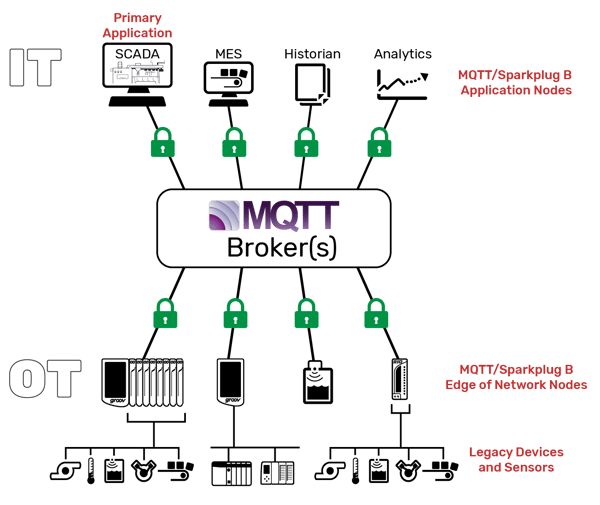Building industrial MQTT networks at scale with edge computing.
We promised that 2020 would be a big year for MQTT at Opto 22, and with the launch of groov RIO, we've renewed our commitment to this transformative communication standard. But, in spite of its popularity—already used in everything from mobile chat to smart energy management—and the advantages it provides for IIoT, there are significant challenges to bringing MQTT into an industrial environment. In this new white paper, we show you how (and why) to make it happen.
If you design industrial data systems for a living or are considering your own company's digital transformation, you may be wondering
- How to provide sufficient scalability to deal with growing demand over time
- How to ensure interoperability between participating systems
- How to design for the security and stability of such a large network
Our new white paper helps you understand the power and the limitations of MQTT in answering these questions, and gives a step-by-step approach to creating a secure foundation for IIoT networks that scale up smoothly and operate reliably in support of mission-critical applications.
For system integrators, developers, engineers, and managers wondering what MQTT can do for them, this paper explains:
- The fundamentals of the MQTT protocol
- How the Sparkplug B specification adapts MQTT to industrial applications
- How to establish and scale MQTT networks using industrial edge computing
Whether you are brand new to MQTT or already have some familiarity, this paper will answer your questions and give you a reliable strategy to build on.


